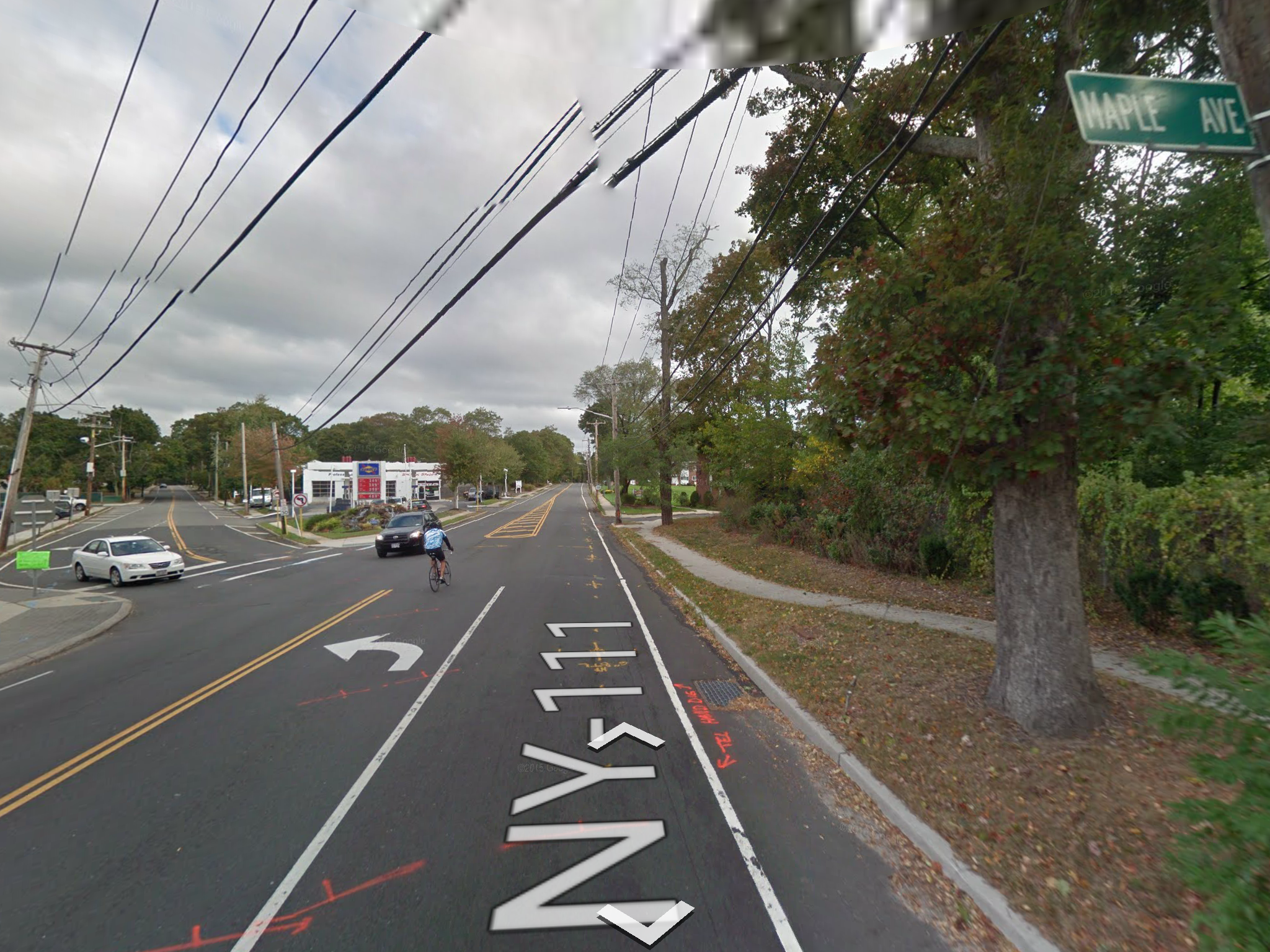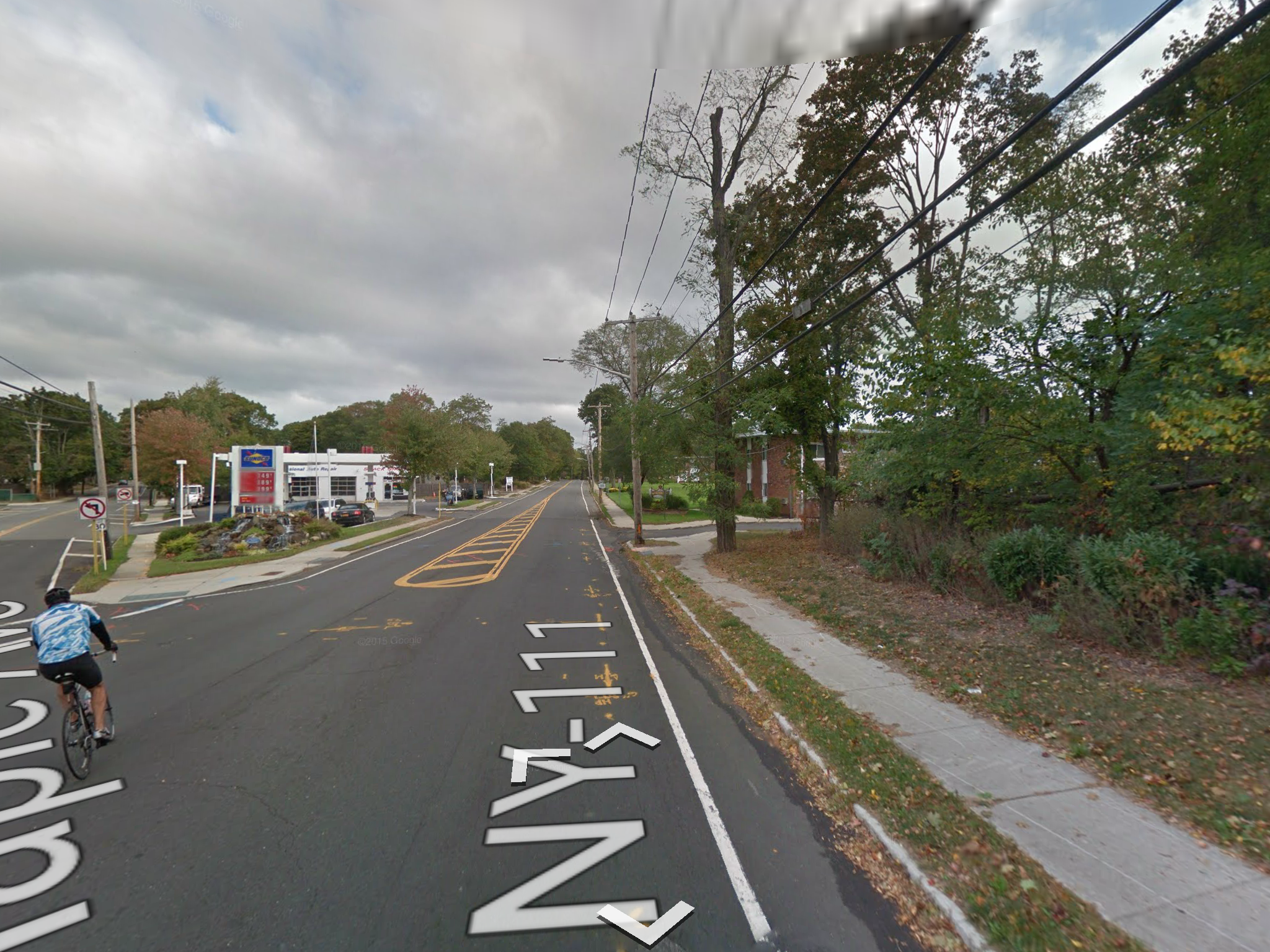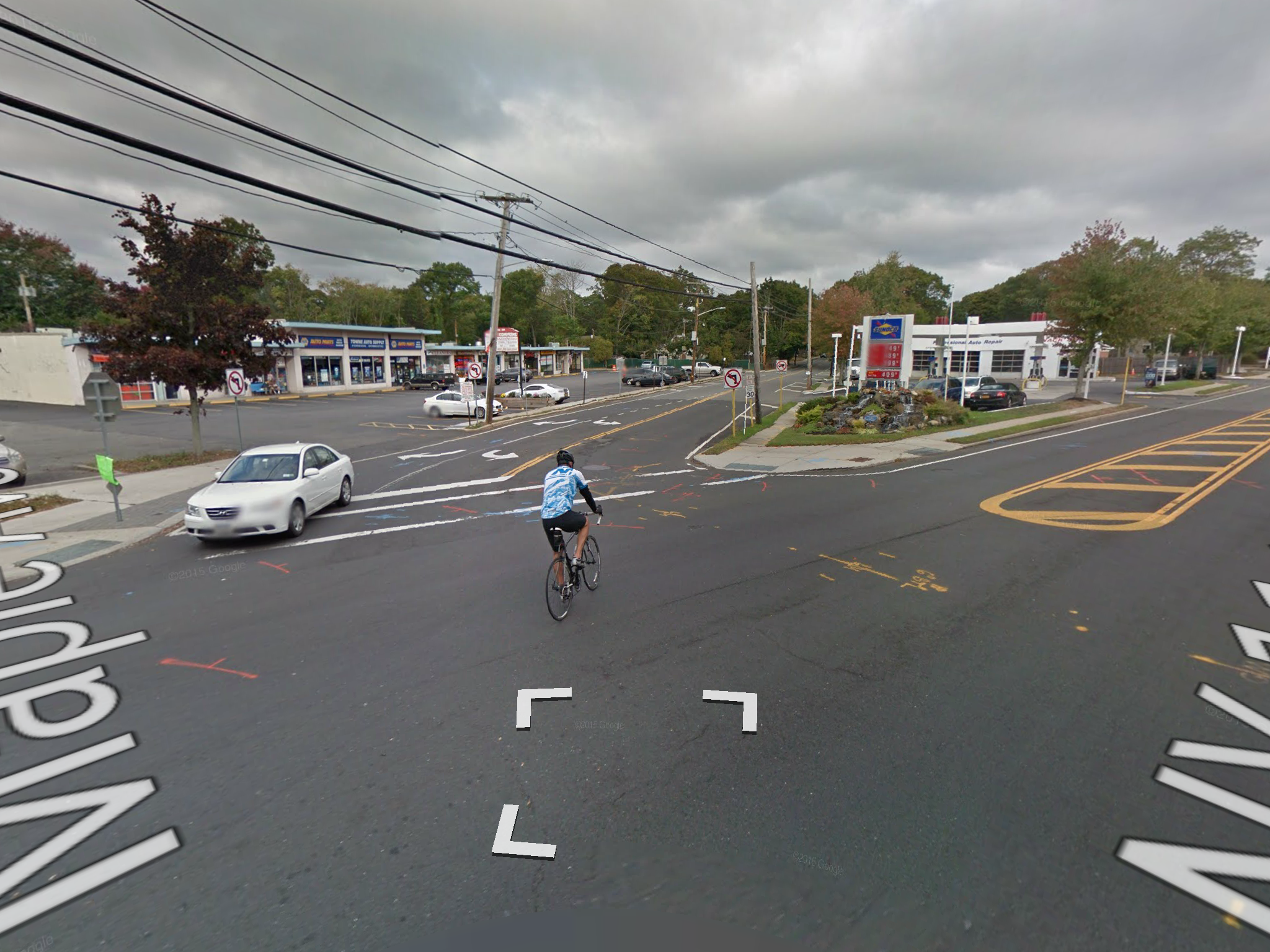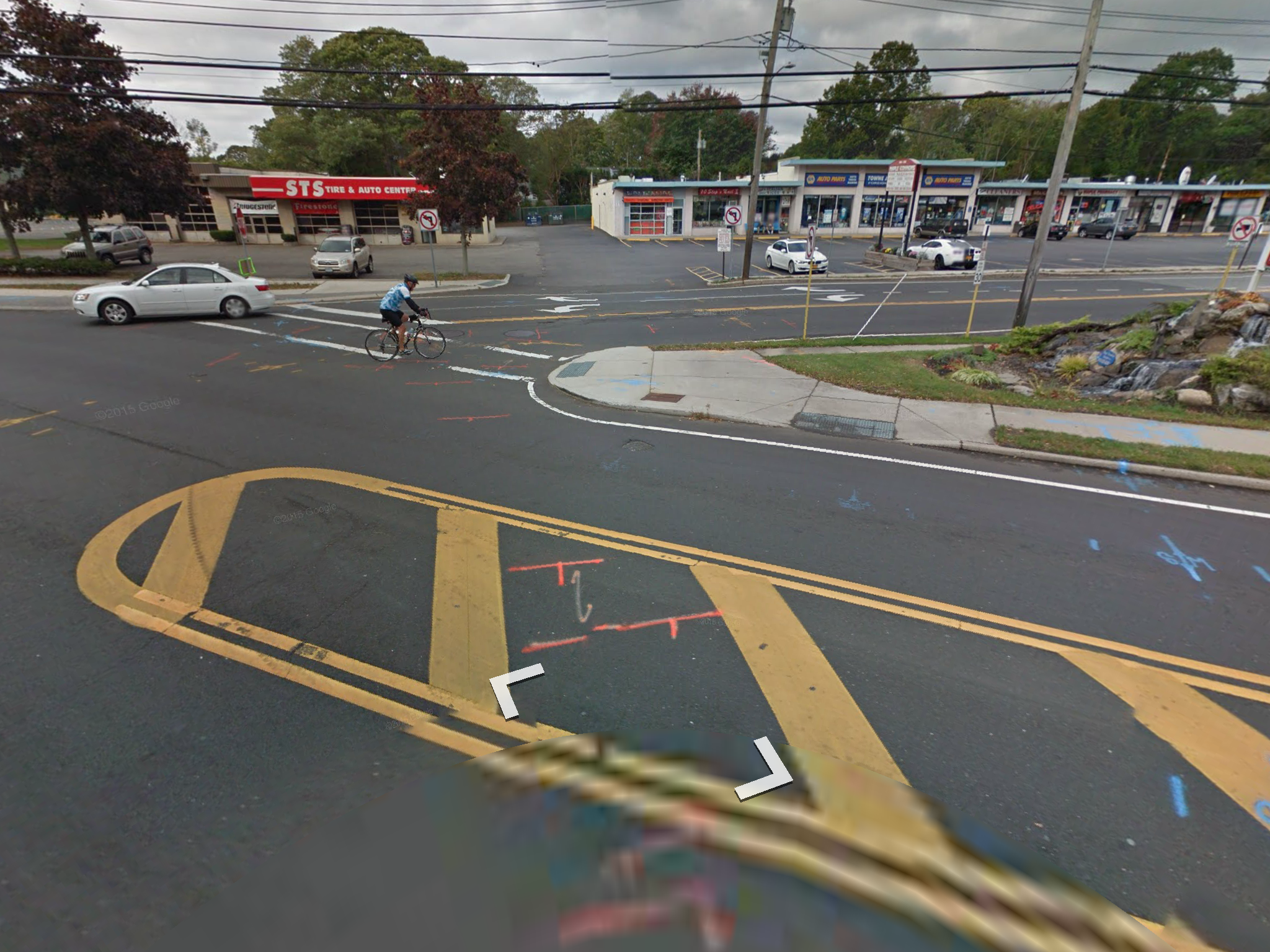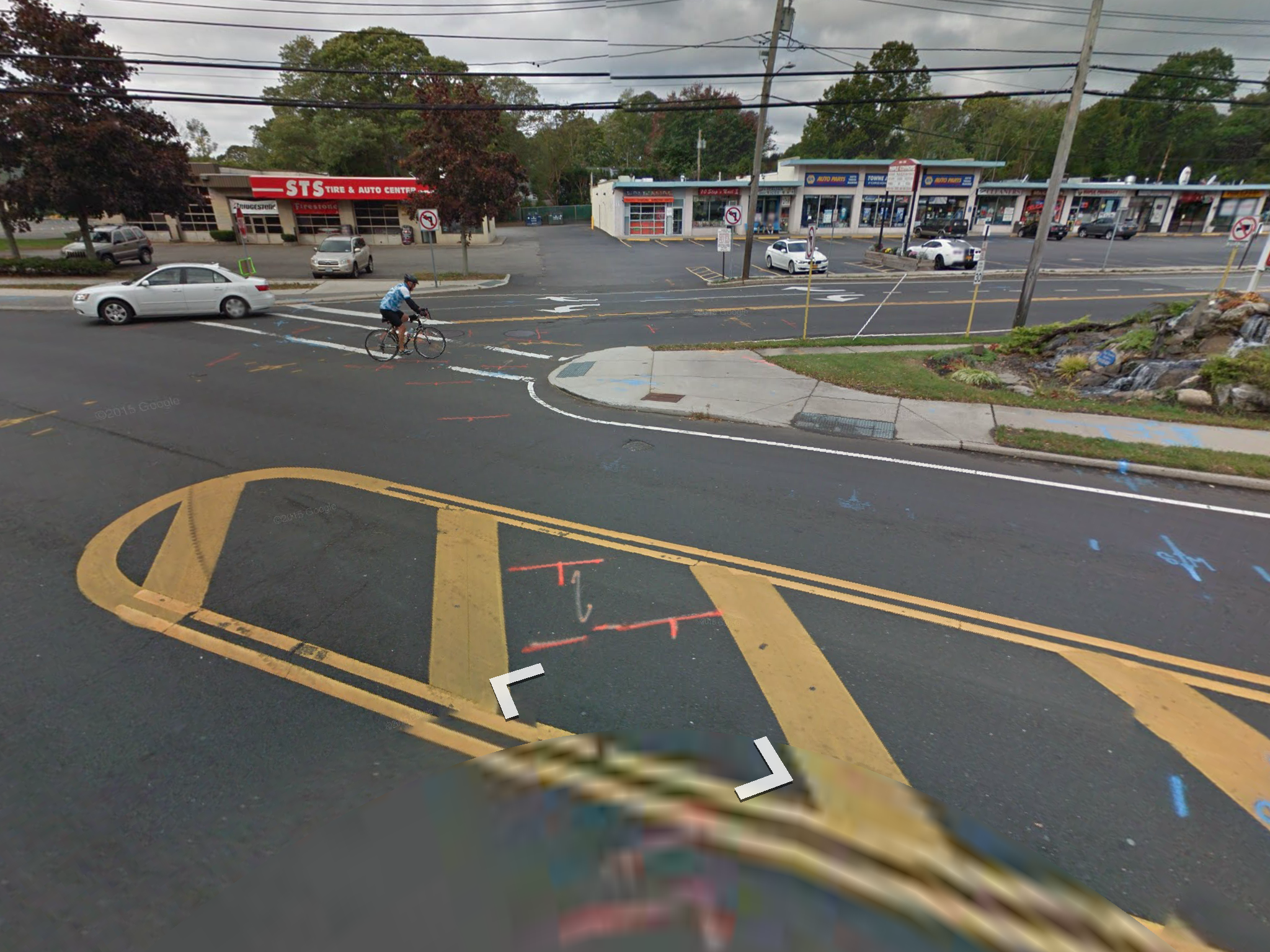Ten Deaths in a Month is Too Many
After setting up this website, I thought I'd wait at least a couple of days between blogs -- spread them out some. However, the Google alert email I found in my inbox this morning left me gobsmacked and I felt like I had to write something about it.
If you've explored this site, you might have noticed the "Crash list" page. The picture at the top of this page is one I made for the that page. It is a photo of the late Dr. Kenneth Rich of Smithtown pasted onto a Google maps street image of the approximate location of his death as a result of a vehicular crash this past Friday evening.
On September 15th I set up a Google alert to let me know whenever there is an online news story about a vehicular crash with a pedestrian or cyclist on Long Island. I did this as sort of an afterthought. When I moved Hempstead in 1995, I had set up an alert for news about Hempstead. I live in a relatively low income area with more crime than I am used to and I was hoping I could understand what is happening in my neighborhood, better. That proved useless since Long Island media rarely reports on crime in Hempstead. Most of the alerts I get are about crime perpetrated outside of Hempstead by Hempstead residents.
However, on the morning of the 15th I did get an alert about the death of a Hempstead woman, Elzire Presume. She was killed by a bus while crossing Sunrise Highway in Massapequa the day before.
I had already started and had been increasingly frustrated by the lengthy processes of trying to get data from the many local police departments about traffic crashes with pedestrians and cyclists on Long Island for two projects that Car-less Long Island is now working on. So, it occurred to me that it might be worth my while to start keeping my own list.
Hence I set up the Google alerts and added the crash that killed Ms. Presume as the first entry on that list.
Although I've had a number of close calls myself, I wasn't really expecting the onslaught of crashes that I have gotten since then. I was expecting maybe one a week, or slightly fewer. However, there has been an average of more than one than one every two days.
It has been only 27 days since September 14th, the date of the crash that killed Ms. Presume, and I've been alerted to a total of fifteen crashes since then -- five of which were critical injuries and ten of which were fatalities!
I keep expecting the alerts to slow down, but they haven't.
This morning's alert was different than the others. For one thing, it came with not one, but three articles about the crash that killed Dr. Rich. The first two (The Daily Journal and Pix11) were very short articles, much like the ones I've gotten about the other crashes. The typical article gives a brief summary of the facts, which is some subset of the following:
1. The day and maybe time it happened,
2. Whether it resulted in a fatality or a critical injury,
3. What hospital the victim was taken to,
4. What the car was doing (turning, driving northbound, etc),
5. What the pedestrian was doing (crossing a street, walking along the shoulder, etc),
6. Usually the name, age and hometown of the victim and/or the driver, unless they were withholding the information about the victim until family has been informed,
7. If it was a hit-and-run or if there was alcohol involved, and
8. If there were charges filed against the driver.
Two of the crashes, including the crash that killed Dr. Rich, were suspected DUIs. Three were hit and runs (one of which was the other suspected drunk driver who killed Charles Velasquez on October 1st and was later apprehended). Most of the time the driver of the automobile stuck around and probably tried to help and probably felt just horrible about it. Charges were only filed in the two cases involving alcohol, and I suspect they will be filed for the other two hit-and-run cases, if the drivers are ever caught. Not much else was said about the crashes or the victims in any of these articles.
However, the third article was a Newsday article that went into detail on the victim, himself.
Dr. Rich grew up in Mt. Vernon and Armok and graduated from Drew University and the Medical College of Wisconsin. He recently quit driving, opting to take his bike the half mile to and from work, instead. He was a good listener. His friends and neighbors say that he was known for his compassion and generosity. He’d bring organic cat food, apples and protein bars to his neighbors. He would come into the office on his days off to check on his patients and he even paid the train fare to and from Brooklyn for one.
Dr. Rich sounds like he was a remarkable man and his death feels like a tragic loss to the world.
I posted another photo of Dr. Rich here to emphasize the tragedy of his death, but also to recognize the fact that I do not have pictures of the other 14 individuals who were killed or critically injured this month who I do not have photos of. His photo has to represent all of them.
The police said that the driver of the vehicle that killed Dr. Rich had alcohol on his breath and had bloodshot, glassy eyes. The driver claimed to have had one vodka drink and pleaded not guilty to drunk driving charges. I assume a breathalyzer was not administered since there was no report of it. It was a after dark and raining heavily. Visibility must have been bad. At least one commenter mentioned that Dr. Rich was dressed in dark clothing.
It is not clear to me that the driver of the automobile that killed Dr. Rich is necessarily more in the wrong than the driver of the bus that killed Ms. Presume on Sunrise Highway in Massapequa, or the driver of the car that killed 24-year-old Farmingdale student Eyyad Almargi on Melville Road in Farmingdale on the very day of the Car Free Long Island Day rally there, or the driver of the car that killed 28-year-old Juan Mejia on Montauk Highway in Bellport, or any of the other 14 drivers who killed or critically injured a pedestrian or cyclist on Long Island this month.
It is conceivable to me that the driver who killed Dr. Rich was indeed under the legal limit and that this crash was as much of an ‘accident’ as any of the other crashes that happened this month.
So where does that leave us?
This month ten lives were taken and five more were left critically injured. We’ve learned that one of those lives was that of a truly beautiful soul. We know nothing of the other fourteen except names, ages and hometowns.
I suspect that most of the other nine lives lost this month also had a side that was generous, also left behind people who loved them, also were trying to do the right thing with their lives to the best of their ability.
Who is to blame for these deaths?
There is a movement underway to erase the word ‘accident’ from the lexicon involving auto crashes. Hsi-Pei Liao, the founding member of Families for Safe Streets, makes an emotional and compelling argument for this movement in his Wired Magazine article, Stop Calling My Daughter’s Death a Car Accident.
I concur completely that most of these crashes are the result of drivers who are not actively watching out for pedestrians and cyclists; that negligence is the culprit we need to fight. Because of this I refrain from using the word ‘accident’ when referring to such events, unless it is in quotes.
I myself have had several very close calls and for two of them, the driver actually stopped to apologize, horrified that he or she almost killed me. The first of these two incidents was in Amityville. I was rollerblading on the sidewalk and about to cross a street with a stop sign. As I began to cross, a car zoomed up in front of me to stop at the edge of the street she wanted to turn onto rather than pause first at the edge of the crosswalk. I ran into the side of her car. She was visibly upset that she came so close to killing me and I felt badly for her, but the fact is that she did not even consider looking for pedestrians as she sped across the crosswalk.
The other time was several years later in Hempstead. I was walking east on the south side of Hempstead Turnpike. I was crossing a side street and before crossing I checked for turning cars (I am now a very experienced pedestrian, after all). There were none and so I began to cross. Once I was on the street I notice a westbound SUV pull into the left turn lane to turn into the street I was crossing. I tried to hurry across the lane he was supposed to turn into, but when he found a break in the traffic he stepped on it and cut the turn short, racing into the lane I was hurrying towards. I jumped backward to avoid him and we locked eyes as I did. I then continued my trek down Hempstead Tpk and he turned around and hunted me down to stop and apologize. Again, he was horrified, but the fact of the matter is that the possibility that there might be a pedestrian crossing the street he turned into never occurred to him until he almost hit me.
If circumstances had been slightly different in either of those situations, it would have lead to a short blurb that gives my name, age and hometown in one of the online Long Island journals with lots of flashy ads. No charges would have been filed.
In both situations, the culprit was negligence itself. I am quite certain most of the close calls who didn’t stop to apologize to me were, as well, with one or two notable exceptions of drivers who I am pretty certain were actively trying to antagonize me.
But when you are in control of something as dangerous as an automobile, negligence is a very big deal. People die because of it. I would bet anything that this month on Long Island ten people died and five were critically injured because of it.
Credit to Long Island Streets for making me aware of this image.
With that said, though, my experience is that people are rarely able to rise above the society they live in. The drivers who almost killed me were driving like almost everyone else in Long Island drives.
We nurture a culture of vehicular negligence.
In mid-September my husband Bill filmed a series of videos of me trying to cross Old Country Road at the Glenn Cove Road intersection. In all of my northbound crosses, I barely made it before I lost the pedestrian light because I had to wait so long for turning traffic. Of all the cars that turned in front of me that day, only one paused to wait for me, but the car behind him honked and drove on again before I was able to cross.
I am hesitant to villainize each individual driver. In fact, I am certain that most of them are horrified by what they have done and I feel badly for them. I suspect it will haunt them for a very long time. The two who stopped to apologize to me were obviously very upset.
Reading the comments on the Newsday article about Dr. Rich, I couldn’t help but feel the urge to defend the driver who killed him. Of course, the vitriolic comments were referring to the possibility that the driver might have been drunk, which is now socially unacceptable, not to the fact he simply might not have been paying close enough attention, which is still socially acceptable.
We tend to condone vitriol when we have decided that we want to make certain actions socially unacceptable. I don’t think that vitriol is healthy, either.
One thing that we need to do is humanize the victims. Imagine if each of those ten deaths and five critical injuries earned a full write-up in Newsday? Perhaps we’d learn about Ms. Presume’s four grand children, or Mr. Almagari’s ambitions to be a a computer programmer or how Mr. Mejia’s wife is now raising three children without a father (all made up since I know nothing about Ms. Presume, Mr. Almagari or Mr. Mejia accept their name, hometown, age and the vague circumstances of their unfortunate deaths).
If we took the time to recognize the victims as people in these reports, not just unfortunate pedestrians who were ‘accidentally’ killed, those of us reading that report might stop and realize how tragic it is for both parties involved. We might realize how much we don’t want to be the responsible party in such a tragedy.
Another thing we can do is remind drivers continuously that it is really easy to take a life when you are driving, even if you are not drunk or not texting or doing any of the now unacceptable things to do. Remind them that if they are not constantly vigilant, they may kill someone. Remind them that negligence is unacceptable. Although vilifying them is not appropriate, charging them may very well be at times. There are laws to protect pedestrians. Drivers need to be made aware of them and need to be held accountable for them.
Presently, we don’t even expect knowledge of pedestrian safety laws on our driving exams.
We can also ticket people for disobeying laws that were set in place to protect pedestrians. For example, when turning, one should stop for pedestrians in crosswalks. If we were actively ticketing people who didn’t do that, then they may very think to start looking for pedestrians in crosswalks.
It should be taken as an axiom that if you kill someone or something, you are driving in an irresponsible way. If you cannot stop in time, you are driving too fast, and if you didn't notice a pedestrian (or a dog or a racoon), you might have been driving too fast for the conditions. This would mean that on average, people would be expected to drive much more slowly than they are used to driving, but I am certain modern society would survive if that were to happen.
Laws and insurance regulations should recognize that.
Finally, the public awareness campaign needs to be accompanied by a serious financial commitment to infrastructure changes that make it safer for pedestrians and cyclists. Even the most vigilant of us can miss things on dark and rainy evenings, or driving east at dawn, or west at sunset, or when someone is in our blind spot. We need to make infrastructure changes that minimize the possibility of these slips.
Ten deaths and five critical injuries in less than a month is simply scandalous.
We should, as a society, be outraged by the pedestrian massacre that seems to happening all around us almost daily. It should be our call to action. We need a concerted public commitment to change – both a change in attitude and awareness, and a financial commitment to change in infrastructure.
Now back to Friday's crash in Smithtown.
When I took the Google street view picture of the approximate location of Dr. Rich’s death, I noticed a cyclist waiting in the left turn lane to turn onto Maple Avenue. After the surrealness of recording a month of pedestrian and cyclist death, that image felt like a ghost. I couldn’t help but see him as the eerie pre-image of another life soon to be taken. I voyeuristically followed him on his turn, as much as Google maps would allow me to. I sincerely hope that that cyclist is safely at home this Sunday night. Maybe enjoying a glass of wine with friends after a wonderful ride on this gorgeous autumn day, maybe listening to Prairie Home Companion on WNYC with a cup of hot chocolate, maybe just going to bed early.
-- Sylvia Silberger


